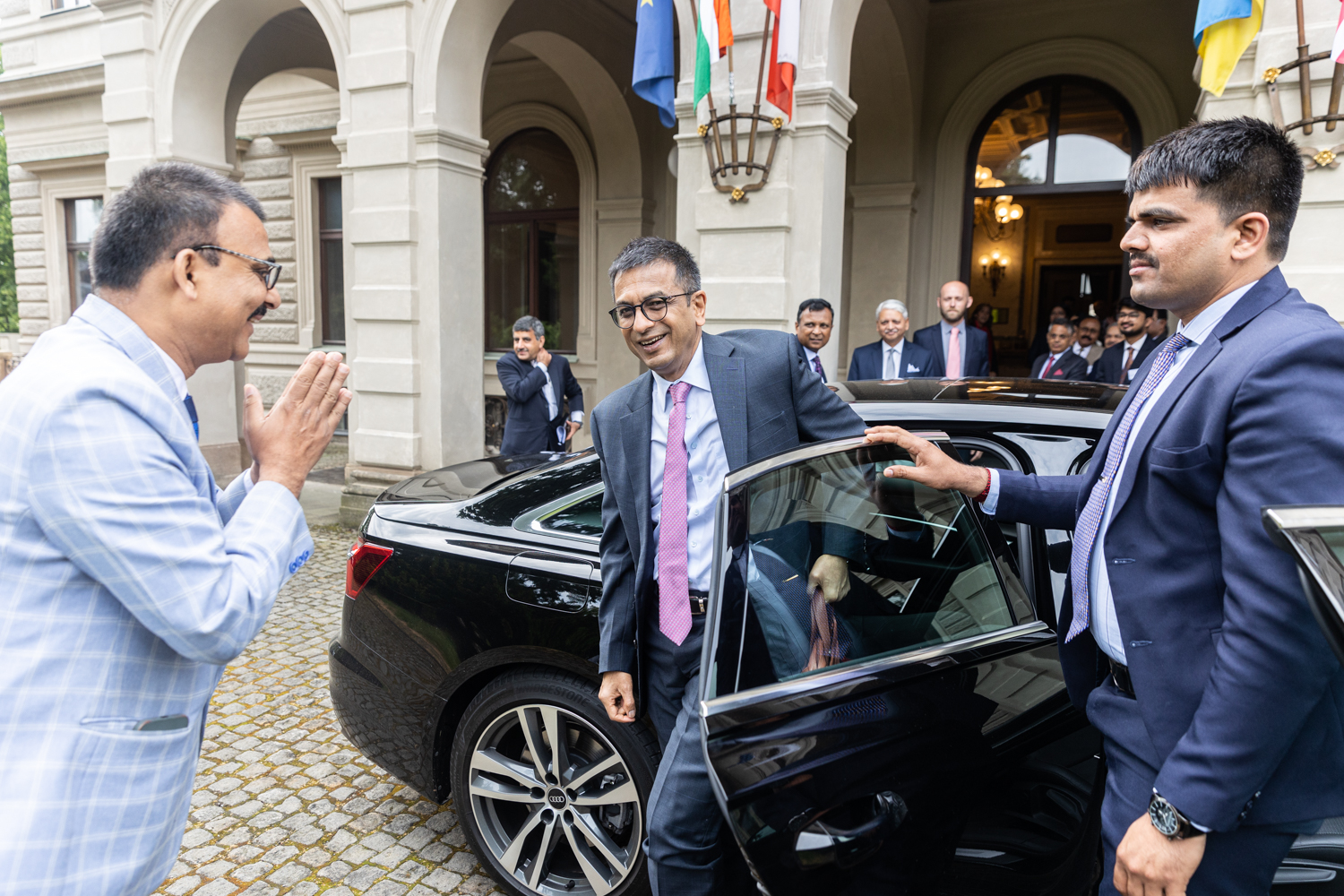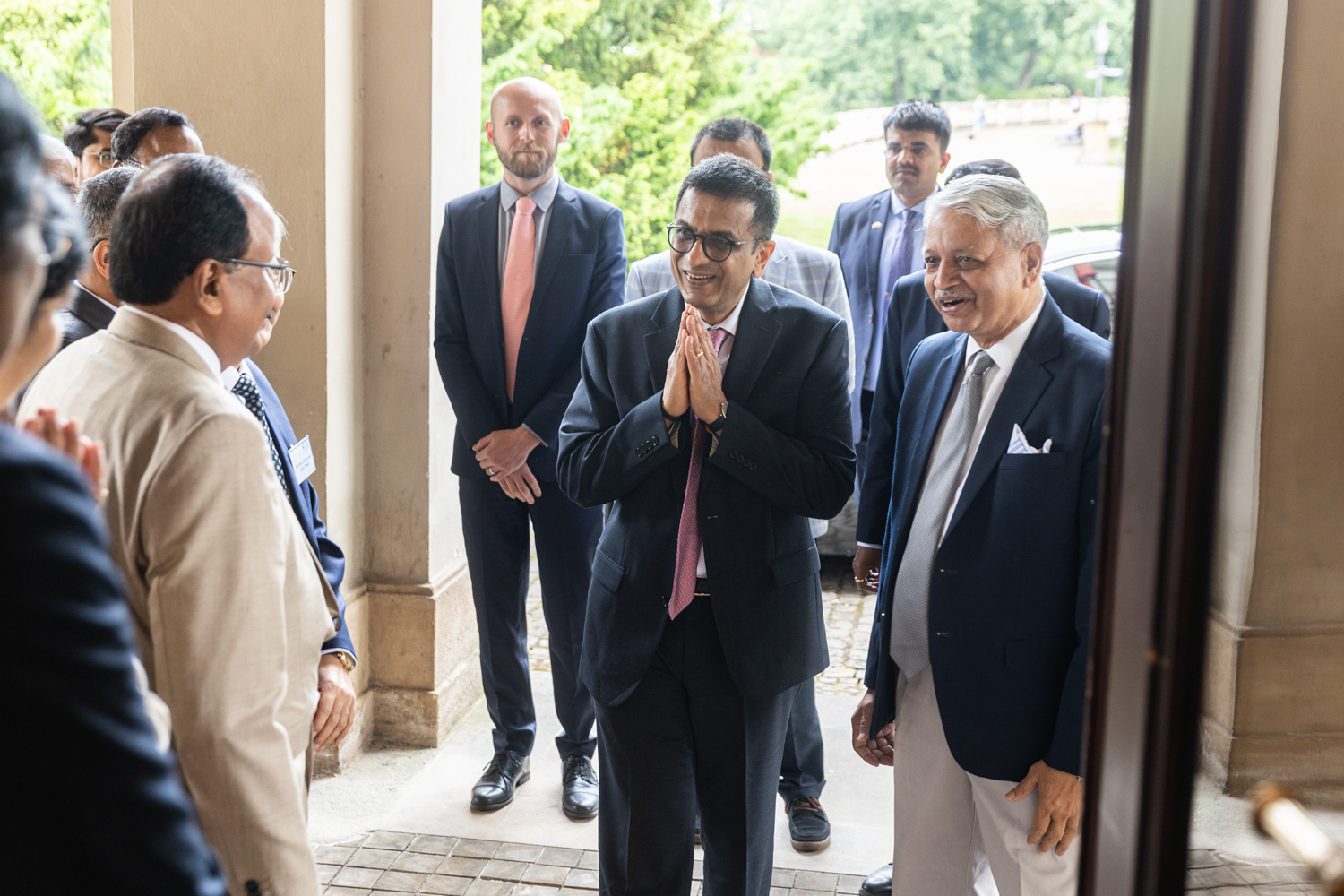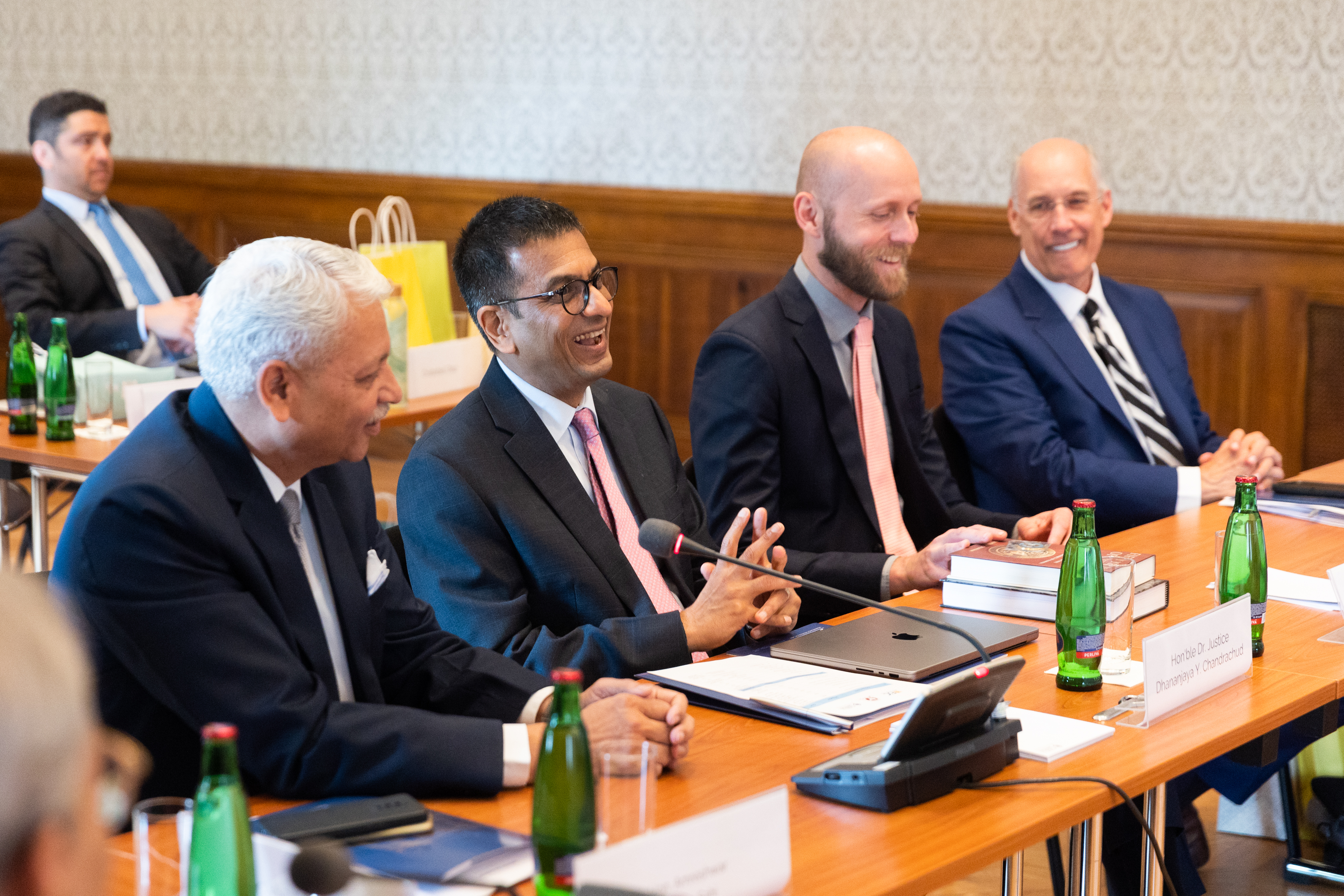The Field Trips
You know you’ve had a great workweek when it starts and ends with field trips, and on Wednesday, you enjoyed coffee with the Chief Justice of India. I was invited by the European Values Center for Security Policy (EVC) to attend an event within the Women in Security Policy Network with my colleague and dear friend, Mariia. The panel focused on the impacts of war and the importance of promoting gender equality amidst conflict in Ukraine and Taiwan. On Tuesday, Mariia and I boarded Tram 22 and trolleyed through Prague 1’s narrow streets beneath gold-tipped towers and church spires that have witnessed so much history. As we crossed the Most Legií (Legion Bridge) and entered the Lesser Town, the midday rainclouds cast a grey hue, making the city look worn and faded. Despite this, the surroundings still felt warm and comfortable.
Slightly tardy, we tiptoed into EVC’s conference room and bashfully took our seats at the roundtable alongside foreign policy experts and feminists. Over the next hour, I learned about war’s impact on feminism. Did you know that it’s estimated to take 100 years to reach gender equality in Ukraine, but because of the war, it’s now projected to take 200 years? War is archaic, forcing people to revert to their traditional gender roles. The grave and urgent daily perils of a country at war consequently put its domestic human and gender rights movements on the backburner. They’re seen as ‘untimely.’ But at the same time, the UN has verified that Russian troops are using rape and sexual violence as part of its military strategy. Thus, while Ukraine’s progress towards gender equality has slowed from distraction, Russian soldiers are arming themselves with Viagra. Furthermore, global feminists are failing these women. One of feminism’s core tenets is the rejection of its militarization. In Taiwan and Ukraine, there’s a trend among global feminists to use anti-militarization rhetoric and advocate for peaceful demonstrations. The sentiment is not only dangerous, but it misses the point. As Maria and I stepped into EVC’s cobblestone courtyard, lined with photos of women, children, and human rights leaders, I vowed to be a better feminist. Starting with this blog post: the feminist movement is about a battle for justice, not the black-and-white rejection of militarization. Although defending women’s rights peacefully is still a crucial objective, in Taiwan and Ukraine, feminists need to be focused on the well-documented attack on women’s rights, which is not the same as advocating for peaceful demonstrations.
Wednesday mornings at Villa Gröbovka are usually peaceful. It’s the one day a week that the office can work remotely, and most typically do. But this morning was different. The small tables in the lobby were covered with white linen tablecloths, and photographers eyed the carefully arranged pastries. Justices and judges from India and our staff were dressed formally, and there was an excited buzz in the air. A man who speaks for 1.4 billion people was coming. The Chief Justice arrived in a sleek black car to a group of eager faces. He greeted each of us warmly, stopping to share a smile and hear which High Court in India we preside over or which US law school we attend. He happily accepted Marek’s invitation for coffee, and the CEELI Institute leadership, two US judges, and two Indian high court justices escorted him up the Villa’s regally carpeted stairs. My colleague, Cris, nudged me and asked if I wanted to come. I nodded vigorously and followed the eight incredibly qualified individuals into our beautiful meeting room. The door was gently shut behind me, and I timidly sat at the roundtable, aware that I was sitting directly across from the Chief Justice of India. Everyone sipped black coffee. What happened next was akin to a gratitude fest. The partnership between the CEELI Institute and India’s judiciary is filled with mutual admiration and the beneficial exchange of information. Everyone at the table was recognized for their incredible work, and the Chief Justice expressed his deep appreciation for our program. Based on the nature of the CEELI Institute’s activities, I’m already incredibly proud to be a team member. Still, when a man who speaks for 1.4 billion people praises the Institute, you hold your head even higher.
 For the final field trip, a few colleagues, the Indian judges and justices, and I visited the High Court of Prague. The building had that familiar Soviet architecture, and our Indian visitors treated the experience like a visit to the Louvre. We were greeted by two Czech judges and escorted to a meeting room, where the two countries’ judicial members inquired about each other’s justice system. Neither nation has juries, but they both have a pesky feature: lay judges, appointed by the district, don’t need to be legally qualified to hold the position. If two lay judges get together, they can overrule the decision of a professional judge. In India, lay judges are only in tribunals, but in the Czech Republic, they’re present in serious criminal cases and labour disputes. If you’re wondering why lay judges are a thorn in the judiciary’s side, one of the Czech judges recalled a case he worked on where the maximum punishment was three years in prison. He wanted to issue a sentence of two and a half years, but the lay judges said ten. He took great pains to demonstrate to them why this would be an overly harsh decision, pointing to precedent and the criminal code. After listening to the professional judge, the lay judges issued a six-year sentence. Not only can lay judges disregard case law, overrule professional judges, and give extreme punishments, but the professional judge is still required to write the opinion. Professional judges can’t write dissents or concurrences in a criminal case, even when they’re overruled. I could hardly believe what I was hearing. The Indian justices, however, were baffled by something else. A high court justice in the Czech Republic typically completes 20-30 cases monthly. The Indian justices churn out over 600 cases per month. One master trainer had already completed 3,077 cases this year, and another had presided over 6,000 cases last year. The conversation was incredulous on both sides, and it was entertaining to observe these judicial members swap stories and compare their systems. The visit was terrific, and I was sad to see this group of master trainers go. But their departure this weekend signals something increasingly occupying the CEELI Institute’s time and energy: the Board’s arrival and the Rule of Law Symposium next week.
For the final field trip, a few colleagues, the Indian judges and justices, and I visited the High Court of Prague. The building had that familiar Soviet architecture, and our Indian visitors treated the experience like a visit to the Louvre. We were greeted by two Czech judges and escorted to a meeting room, where the two countries’ judicial members inquired about each other’s justice system. Neither nation has juries, but they both have a pesky feature: lay judges, appointed by the district, don’t need to be legally qualified to hold the position. If two lay judges get together, they can overrule the decision of a professional judge. In India, lay judges are only in tribunals, but in the Czech Republic, they’re present in serious criminal cases and labour disputes. If you’re wondering why lay judges are a thorn in the judiciary’s side, one of the Czech judges recalled a case he worked on where the maximum punishment was three years in prison. He wanted to issue a sentence of two and a half years, but the lay judges said ten. He took great pains to demonstrate to them why this would be an overly harsh decision, pointing to precedent and the criminal code. After listening to the professional judge, the lay judges issued a six-year sentence. Not only can lay judges disregard case law, overrule professional judges, and give extreme punishments, but the professional judge is still required to write the opinion. Professional judges can’t write dissents or concurrences in a criminal case, even when they’re overruled. I could hardly believe what I was hearing. The Indian justices, however, were baffled by something else. A high court justice in the Czech Republic typically completes 20-30 cases monthly. The Indian justices churn out over 600 cases per month. One master trainer had already completed 3,077 cases this year, and another had presided over 6,000 cases last year. The conversation was incredulous on both sides, and it was entertaining to observe these judicial members swap stories and compare their systems. The visit was terrific, and I was sad to see this group of master trainers go. But their departure this weekend signals something increasingly occupying the CEELI Institute’s time and energy: the Board’s arrival and the Rule of Law Symposium next week.

 Again, all of these phenomenal shots are credited to my esteemed colleague, the lovely Lauriane.
Again, all of these phenomenal shots are credited to my esteemed colleague, the lovely Lauriane.


